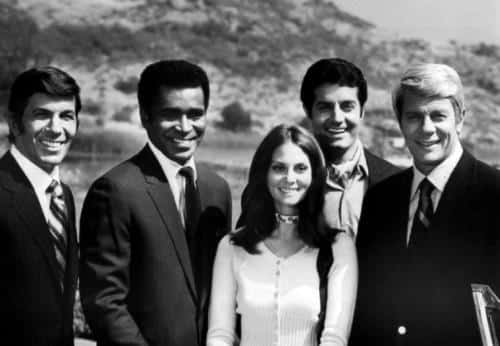
 The following post Nonprofit CEO blog post was written by Standards for Excellence Licensed Consultant David Kubacki and is part of our “Ten Years of Advancing Excellence” blog series, celebrating ten years of the Standards for Excellence Licensed Consultant program. David, the principal of ViaDel Consulting Group, has provided organizational consulting services to several nonprofits with a focus on working with boards and committees on strategic planning and program assessment and improvement. Currently, he provides consulting services in partnership with the Delaware Alliance for Nonprofit Advancement (DANA), a Standards for Excellence Replication Partner. Mr. Kubacki currently serves as the President of the Wilmington West Rotary Club, as well as the Assistant Governor – Area 10 for Rotary District 7630. He is also the Vice President of the Board of the Delaware Symphony Orchestra. David Kubaki became a Standards for Excellence Licensed Consultant in 2015.
The following post Nonprofit CEO blog post was written by Standards for Excellence Licensed Consultant David Kubacki and is part of our “Ten Years of Advancing Excellence” blog series, celebrating ten years of the Standards for Excellence Licensed Consultant program. David, the principal of ViaDel Consulting Group, has provided organizational consulting services to several nonprofits with a focus on working with boards and committees on strategic planning and program assessment and improvement. Currently, he provides consulting services in partnership with the Delaware Alliance for Nonprofit Advancement (DANA), a Standards for Excellence Replication Partner. Mr. Kubacki currently serves as the President of the Wilmington West Rotary Club, as well as the Assistant Governor – Area 10 for Rotary District 7630. He is also the Vice President of the Board of the Delaware Symphony Orchestra. David Kubaki became a Standards for Excellence Licensed Consultant in 2015.
As a Standards for Excellence Licensed Consultant, I incorporate many aspects of the Code into all of my consulting engagements – from teambuilding to strategic planning. As a “recovering” nonprofit CEO, I often find that those engagements focus on the importance of the relationship between the nonprofit board and the CEO. This most important of relationships must focus on mutual trust and respect, and more concretely, clear goals, a board-driven strategic plan, and annual reviews.
The Board Has One Employee
The nonprofit CEO is the center of the organization – of course, as the leader that oversees day-to-day operations…but when the organization is operating effectively the CEO is the funnel that manages so much information that flows from the board and donors through to the staff and clients/service recipients – and vice versa. This is where things can get “iffy.” The nonprofit board “should appoint the chief executive, set the executive’s compensation, and annually evaluate the executive’s performance.” Once the board fulfills that duty, their relationship with the CEO should be one of trust – a trust that empowers him/her to run the organization. However, you often hear stories of boards who micromanage or send mixed messages about how much power the CEO is free to exercise. Sometimes semantics even gets in the way. It doesn’t matter if your “top dog” is called the CEO, President, Executive Director, Managing Director, or even Supreme Leader. What matters is that the board give the CEO the due authority and trust to run the organization. By no means does that mean that the board shouldn’t be involved with the staff or clients or even reviewing policies and offering opinions. However, when a board member (or the board as a whole) actively participates, they should do so with clear boundaries that empower the CEO to steer the ship in the right direction.
A Musical Interlude: The “Maestro” Analogy
I happen to be the Vice President of the Board of the Delaware Symphony Orchestra (DSO). I also happen to have contributed my consulting services to lead the board and other constituent groups through SWOT analyses that informed a board-driven strategic plan. Finally, the orchestra’s season-opening concert happens to have occurred just as I was writing this blog. They played Mahler’s 5th Symphony. The music was amazing. It was probably amazing when it premiered in 1902 and it’s still amazing today. Think of the symphony as the strategic plan. It was probably commissioned by one of the organizations by which he was employed – think of them, along with Mahler, as the board. Who is the nonprofit CEO in this analogy? It’s Maestro David Amado – the Music Director of the DSO (or, conductor, if you will). 114 years later it is his job to wield this “board-driven strategic plan” (created by Mahler and the commissioning body)– he’s looking at the score (the plan) and implementing it “note for note”. The Maestro, or nonprofit CEO, turns this plan into a melodic reality without forcing anyone to do anything. Waving his arms he inspires the orchestra (the nonprofit staff, volunteers, etc.) to act in perfect harmony to create an astonishing performance of Mahler’s 5th Symphony, the strategic plan. If only a board, a nonprofit CEO, and the organization as a whole could implement a strategic plan in such a way – inspiring everyone to do their part to lead the nonprofit organization to accomplish its mission unfettered by the politics and egos that often interfere.
The Power of Relationship
If you don’t mind I’m going to jump from one analogy to another – I have always liked this analogy:
Mission = North
Board = Compass
Strategic Plan = Flight Plan
Executive = Pilot
Staff (and Volunteers) = Crew
This is simply another way to envision the mutual trust and respect that must exist between a board and the nonprofit CEO so that they can lead the organization effectively. The pilot needs the compass, just as the executive needs the board. But like the compass and pilot, the board should inform and direct, and the executive should react, adjust, and lead.
Nonprofit CEO & BOARD Best Practices
In closing, I offer a few best practices:
-
For the CEO: SET ANNUAL GOALS – Present these goals to the board at your first board meeting of the new fiscal year. Make them official and pretty – “President’s Goals: 2016-2017” – Keep them brief – bulleted – more is less – keep it to one page. If you can, tie the goals back to your job description. (you do have a job description, right?)
-
For the BOARD: CREATE A DYNAMIC, BOARD-DRIVEN STRATEGIC PLAN – This is essential! The nonprofit CEO will be busy enough putting out fires and dealing with the day-to-day operations of the organization. There is no room for deciding the ultimate direction and vision of the organization on his/her plate. The strategic plan should come from the governing body, not a single person. Create this plan, and you will empower your nonprofit CEO!
-
For the CEO: DEMAND TO BE REVIEWED – Often boards will opt to skip this important task when things are going well – and, let’s face it, if you’re running the place I’m sure they’re going better than ever. However, it is to your advantage to have a consistent, regular record of all those good times – well, just cause – but also in case things take a turn for the worse. Call it a review, an evaluation, and assessment – but make sure it happens!
-
For the BOARD: DEMAND TO BE REVIEWED – Often boards will opt to skip this important task when things are going well – and, let’s face it, you’re part of the strongest board the organization has ever seen and I’m sure things are going better than ever. Sound familiar: reviewing yourselves will be valuable to both you and the CEO. You might discover why certain board members are disengaged, and the CEO might be able to help you fix the problem!



